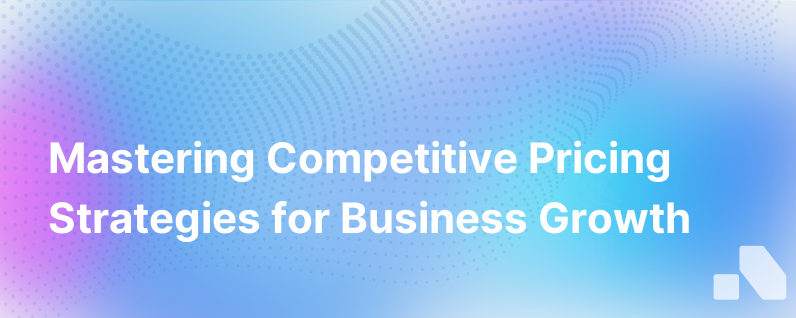Competitive Pricing
Published on November 5, 2023 by David Zhang
Determining the right price for goods or services is critical for businesses, from fledgling startups to established enterprises. It's a complex task, involving everything from corporate objectives to market dynamics. Amongst a myriad of pricing strategies, one has persisted over the ages - competitive pricing.
In this article, we will explore the scope of competitive pricing, its benefits and drawbacks, its application, and strategies to make it work in an increasingly competitive market scene.
What is Competitive Pricing?
Competitive pricing is a pricing strategy in which businesses set the price of their products or services based on what competitors charge. It is suitable in markets where products are similar, and price becomes the primary differentiator.
In essence, it ensures that your business remains attractive to customers and profitable by strategically aligning your prices with market competition. It considers the price range customers are willing to pay and prepares your pricing strategy accordingly.
Importance of Competitive Pricing
The choice to price above, below, or equal to competitors has massive implications on a company's point of differentiation and attractiveness to customers.
-
Navigating Competition : In markets saturated with similar products or services, competitive pricing provides an edge. It influences how consumers perceive your offerings in comparative value.
-
Increased Sales Volume : By strategically aligning your prices with competitors, it is easier to attract cost-conscious customers. Even slight discounts can significantly boost sales volumes.
-
Maintaining Profit Margins : Competitive pricing provides a balance. Prices set too high might deter customers, and those set too low can erode profits. Finding a sweet spot is essential, and competitive pricing encourages such a balance.
However, competitive pricing also has its drawbacks. It can lead to price escalation or 'race to the bottom', killing profitability. It may also cause companies to lose sight of other forms of differentiation such as quality, features or branding.
Implementing Competitive Pricing
The first step to implementing a competitive pricing strategy is understanding the market and your competitors.
-
Competitor Research : Understand who your competitors are, their prices, and the factors contributing to their pricing decisions. Are they providing added value or services that justify a higher price?
-
Market Analysis : Understand your target market. What is their price sensitivity? How do they perceive different price points relating to the perceived value of a product or service?
-
Cost Analysis : Estimate your costs and set a baseline. You can’t price below cost for an extended period and remain viable.
-
Value Evaluation : Understand your unique selling proposition (USP). Competitive pricing doesn’t mean you need to match or undercut the competition if you deliver increased value.
After analyzing these points, businesses can then set their prices at, above, or below their competitors based on their desired positioning.
Leveraging Competitive Pricing Effectively
To make competitive pricing work for you, consider the following strategies:
1. Price Skimming : If you have a unique product, you might opt to set a high price initially and lower it over time, as competitors introduce similar products.
2. Penetration Pricing : Alternatively, you could set a lower price initially to attract customers and raise it once a customer base is established.
3. Bundle Pricing : Bundle your products to provide higher perceived value at an attractive price.
4. Differential Pricing : Offer different prices to different customer segments. Offering discounts to certain customer groups or during off-peak times can attract price-sensitive customers.
Keep in mind, these strategies should be coupled with continuous competitor and market monitoring. In recent years, AI-powered tools like Aomni have been developed. Such tools monitor competitors’ pricing strategies in real-time, alert businesses about market shifts, and offer data-driven pricing strategies.
Conclusion
At the core of it, competitive pricing is both, an art and a science; it requires a keen understanding of your market, competitors, costs, and value propositions. When implemented strategically, it can turn price into a powerful tool for driving sales and maintaining profitability.
However, it's crucial to remember that while price is a key factor, it is not the sole determinant of successful sales. Every business should balance pricing with other aspects like product quality, brand value, and customer service, to create a holistic approach. With the advent of competitive intelligence tools like Aomni, the task of maintaining a competitive edge while ensuring profitability becomes simplified and more efficient.